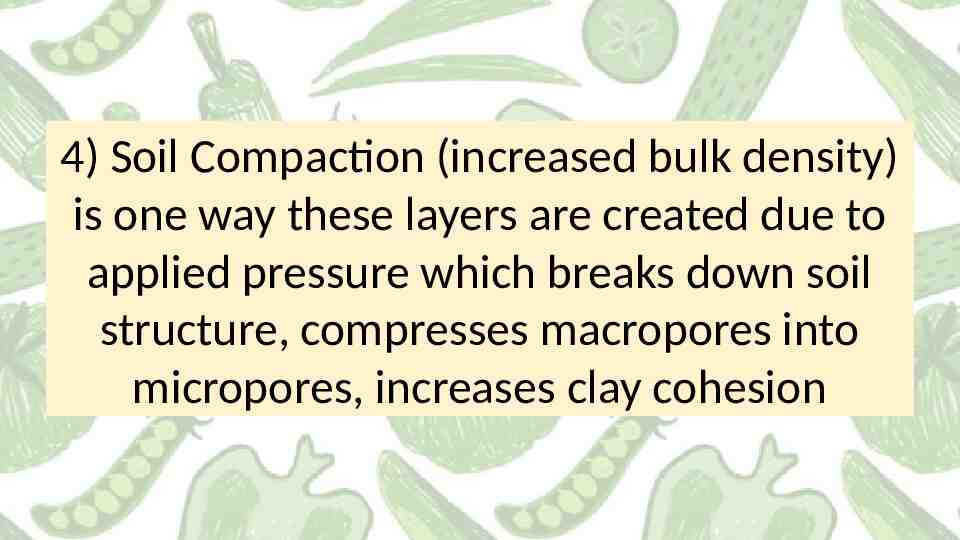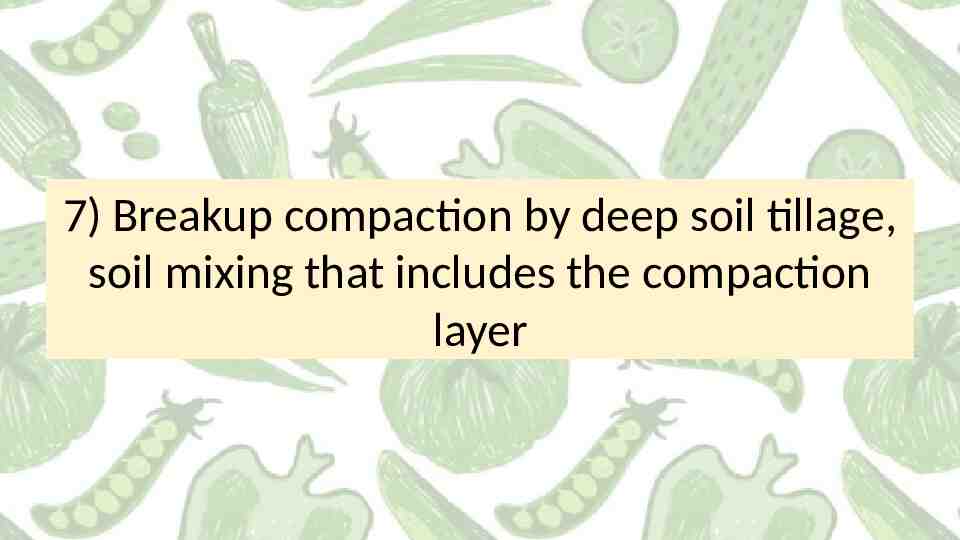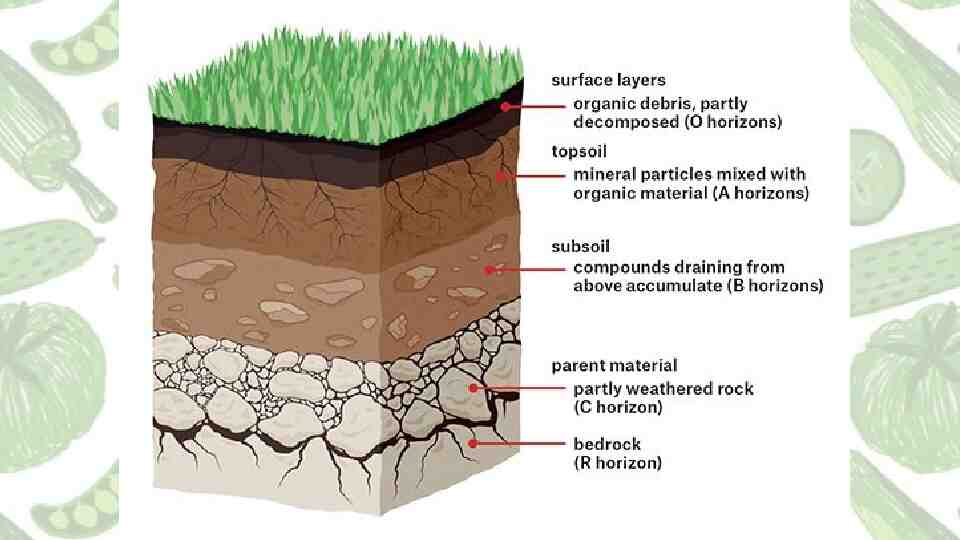Module 1: Soil- It’s Not Just Dirt! LSU AgCenter Home
96 Slides5.53 MB
Module 1: Soil- It’s Not Just Dirt! LSU AgCenter Home Gardening Certificate Course Dr. Joe Willis, Anna Timmerman & Chris Dunaway
Why Is Soil So Important? The Functions of Soil Can Be Grouped Into 5 Crucial Ecological Roles:
1) Soil supports the growth of higher plants. Soil properties determine the nature of the vegetation present and, indirectly, the number and type of animals the ecosystem can support.
2) Soil properties are the principal factor controlling the fate of water in the hydrologic system. Water loss, utilization, contamination and purification are all affected by the soil.
3) Soil functions as nature’s recycling system. Soil is the medium where waste products and the dead remains of organisms (plant, animal, human) are broken down and their basic elements made available for reuse by the next generation of life.
4) Soil is the home and habitat for an unimaginable diversity of living organisms from microscopic bacteria to fungi to small insects, worms, reptiles, amphibians and mammals.
5) Soil is also an engineering medium for human-built ecosystems as the foundation on which they stand, and the building materials used to erect them.
As Gardeners, What Does Soil Do For Our Plants?
1) Soil provides physical support for plants. It anchors them in place and holds them upright.
2) Soil provides ventilation for plant roots through the network of soil pores. Roots take in oxygen and release carbon dioxide, just like us. The soil provides for release of CO2 into the atmosphere and fresh O2 to enter the root zone.
2) 3)Soil Soilprovides stores and ventilation provides for water plant forroots the plant roots and channels away excess water so the roots don’t drown. Plants need a continuous stream of water for cooling, nutrient transport, turgor and photosynthesis.
4) Soil moderates temperature fluctuations. Soil functions as insulation for the plant root system. Soil temperature rises and falls much more slowly than air temperature and becomes more stable the deeper down you go.
5) Soil protects plants and plant roots from toxic materials. Toxic substances may result from human activity, be produced by plant roots or microorganisms, or result from natural chemical reactions
5) Toxic gases are channeled away through the soil pore system, toxic chemicals can be adsorbed by soil particles and sequestered away from the roots, soil can provide an environment for organisms to breakdown and detoxify toxic substances.
6) Soils provide plants with the inorganic, mineral nutrients they need for growth in the form of dissolved ions. They also serve as a storage location for many of these nutrients.
What Makes Soil?
What Makes Soil?
Soil Mineral Components
1) Sand – is 2.0-0.05 mm in diameter and easily visible with the naked eye.
2) Silt – is 0.05-0.002 mm in diameter and only visible with a microscope.
3) Clay – is 0.002 mm and less in diameter and only visible with an electron microscope.
4) While these different components are significantly different in how they function in soil and their effect on soil properties, they are all essentially just different sized particles of the same parent material.
Sand Attraction of Particles for Each Other Water-Holding Capacity Aeration Drainage Rate Compactibility Pollutant Leaching Potential Ability to Store Plant Nutrients Resistance to pH Change Low Low Good Rapid Low High Poor Low
Sand Sand Soil Pore Space
Silt Attraction of Particles for Each Other Water-Holding Capacity Aeration Drainage Rate Compactibility Pollutant Leaching Potential Ability to Store Plant Nutrients Resistance to pH Change Medium Medium-High Medium Slow-Medium Medium Medium Medium-High Medium
Silt
Clay Attraction of Particles for Each Other Water-Holding Capacity Aeration Drainage Rate Compactibility Pollutant Leaching Potential Ability to Store Plant Nutrients Resistance to pH Change High High Poor Very Slow High Low High High
Organic Matter
1) Organic matter is the smallest component of soil making up 1% to 6% by weight on average
2) Soil organic matter consists of all living and dead carbonaceous substances (contain carbon)
3) High organic matter content darkens soil
4) Organic matter increases a soil’s waterholding capacity and its cation exchange capacity (CEC)
5) Dead organic matter is continuously broken down (decomposed) by soil organisms
6) The products of this decomposition is the nutrient source for plants and other soil organisms
7) Organic matter is lost from the soil as carbon dioxide produced by microbial respiration
8) Soil organic matter must be continually replenished by the addition of plant and/or animal residues
9) All plant nutrients except carbon, hydrogen and oxygen (C,H,O) are provided by soil organic matter
10) Organic matter binds soil particles together and plays a vital role in soil structure
Soil Biota Bacteria Actinomycetes Fungi Algae Protozoa Nematodes Mites Earthworms 100 million to 1 billion per tsp 10 million to 100 million per tsp 100,000 to 1 million per tsp 10,000 to 100,000 per tsp 1,000 to 10,000 per tsp 10 to 100 per tsp 1 to 10 per tsp 10 per cubic foot
Soil Water
1) Makes up 25% - 30% of soil volume – Soil Storage Water
2) Water is retained in soils as thin films on the surfaces of soil particles and in soil capillaries
3) Majority of soil storage water loss is by evapotranspiration – the combination of soil evaporation and plant transpiration
4) Mulches reduce soil water loss to evaporation by 33%
Soil Aeration
1) Makes up 25% - 30% of soil volume
2) Occupies soil pore space not occupied by water
3) For plant growth and activity of microorganisms, aeration is as important as moisture
4) Microbiological activity and plant growth severely inhibited when soil air content drops below 10%
5) There is a continuous release of CO2 from the soil and O2 diffusion into the soil
Soil Properties - Texture Soil texture is the size of the particles that constitute the soil measured in percentage of sand, silt and clay
Soil Properties - Structure
1) Soil Structure is the grouping and binding of the individual soil particles into aggregates of different sizes and shapes
2) Structure depends on soil physical and chemical properties
3) The activity going on in the soil produces glues that bind individual soil particles into aggregates
4) These glues are bacterial slime proteins, fungal sticky proteins, root exudates, fungal exudates, worm castings
5) Soil organisms create openings between soil particles and aggregates as they move through the soil
6) Electrical charges on the surface of organic matter and clay attract each other along with chemicals in water acting as bonding agents
7) With adequate soil structure there is good drainage, available capillary water, sufficient air circulation, space for soil biology
Soil Properties - CEC
1) CEC or Cation Exchange Capacity is simply the sum total of the exchangeable cations a soil can hold
2) The small soil particles – clay and humus carry a negative charge on their surface
3) Positively charged ions (cations) will attach to these negatively charged particles
4) The cations that attached to clay and humus include: calcium (Ca ), potassium (K ), sodium (Na ), magnesium (Mg ), iron (Fe ), ammonium (NH4 ) and hydrogen (H )
5) Soil also contains negatively charged ions (anions) that include: chlorine (Cl-), nitrate (NO3-), sulfate (SO4-) and phosphate (PO4-). These are repelled by the negative charge on the soil particles and stay in solution
6) Why is this important? Plants have root hairs with their own charges and cations. Root hairs use hydrogen (H ) cations as their exchange currency for the nutrients bound to the soil particles
Soil Properties - pH
1) pH is the measure of hydrogen cations in a solution. As H increases, pH decreases and vice versa
Why is soil pH important? 2) Soil pH affects what organisms can live in the soil 3) Soil pH affects the availability of soil nutrients for plant uptake
Macronutrient from air or water Macronutrient from soil solids Micronutrient from soil solids Carbon (CO2) Nitrogen (NO3-, NH4 ) Iron (Fe2 ) Hydrogen (H2O) Phosphorus (H2PO4-, HPO42-) Manganese (Mn2 ) Oxygen (O2, H2O) Potassium (K ) Boron (HBO3) Calcium (Ca2 ) Zinc (Zn2 ) Magnesium (Mg 2 ) Copper (Cu2 ) Sulfur (SO42-) Chlorine (Cl-) Cobalt (Co2 ) Molybdenum (MoO42-) Nickel (Ni2 )
Soil Properties – Water Holding Capacity
1) Plants need a continuous supply of water to transport nutrients, maintain turgor, regulate temperature, remove waste and exudates
2) Soil is the reservoir of water for plant and biota needs
3) Maximum Retentive Capacity – When every soil pore is filled with water – soil is saturated.
4) Gravitational Water – Water occupying large pores that will drain due to gravity
5) Field Capacity – When all the water has drained and only the micropores and bound water remains
6) Water Holding Capacity – The amount of water retained in soil at Field Capacity, essentially equivalent
7) Wilting Point Water – The amount of water in the soil that is not plant accessible, your plants will wilt.
8) Plant Available Water Field Capacity – Wilting Point Water Content
9) Clay and Organic Matter content are the major contributors to soil water holding capacity
Soil Compaction and Drainage
1) Factors affecting plant-available water: soil texture, soil structure, organic matter, soil depth, rooting depth, soil stratification, compaction
2) These factors also affect soil drainage – the rate at which soil moves from Maximum Retentive Capacity to Field Capacity
3) Regarding soil water movement, stratification is the creation of soil layers where pore size changes abruptly – sand layer, clay layer, gravel layer – which impedes water movement upward and downward. This leads to saturated soil.
4) Soil Compaction (increased bulk density) is one way these layers are created due to applied pressure which breaks down soil structure, compresses macropores into micropores, increases clay cohesion
5) Pressure comes from vehicle traffic, foot traffic, pounding water, wetting-drying cycles
6) Increase drainage by adding organic matter, adding sand, reducing compaction factors, increasing gravitational effects
7) Breakup compaction by deep soil tillage, soil mixing that includes the compaction layer
Please post all your questions to the message board link that was emailed to you.





































































































